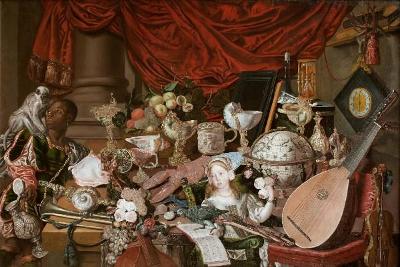The Paston Treasure

This painting, 'The Paston Treasure', sometimes called 'The Yarmouth Collection', is a unique work, defying easy interpretation. It gives an impression of sumptuous luxury, combined with a sense of mystery, an overcrowded appearance, and a strangely skewed perspective.
It is a rare record of a small number of the Paston family's collection of over 200 treasures. It was painted in the early 1660s by an unknown Dutch artist who was staying for about three months at the Paston's family home at Oxnead Hall near Aylsham in Norfolk.
The carefully arranged groupings of figures, musical instruments, timepieces, creatures, fruit and flowers all seem to be telling a story, but not a story which viewers today can easily decode.
Curator Dr Francesca Vanke introduces 'The Paston Treasure' Exhibition of 2018, at Norwich Castle Museum in partnership with the Yale Center for British Art in the USA:
The painting was commissioned either by Sir William Paston (about 1610-1663) or his son Sir Robert Paston (1631-1683), who was created Earl of Yarmouth in 1679. The objects in the painting really existed, making this a rare record of a cabinet of treasures in a British collection. Father and son collected the objects on a journey through Europe to Cairo and Jerusalem. The painting gives a sense of the variety, beauty and international nature of the objects they collected - wonders of nature as well as art.
There are many layers of stories in 'The Paston Treasure'. After years of research, we now understand much more about the links between the painting, the collection, and the Paston family themselves. We know how and why the world of the painting disappeared.
When William Paston, the second Earl, died in 1732, all his children but one had pre-deceased him. The earldom lapsed and his surviving daughter, Charlotte (c.1675-1744), had to deal with the bankruptcy. Everything was sold and Oxnead Hall abandoned.
The whereabouts of most of the objects from the family's huge collection are still unknown, as is the identity of 'The Paston Treasure's' artist. Some of these mysteries may be solved in the future. The more we learn, the more fascinating this picture becomes.









